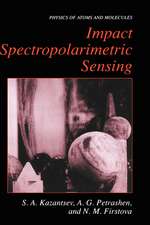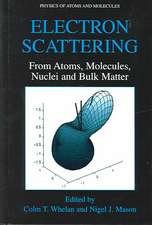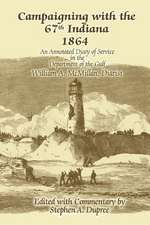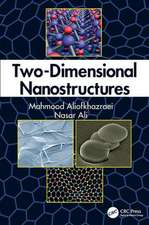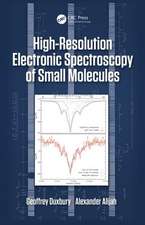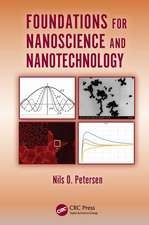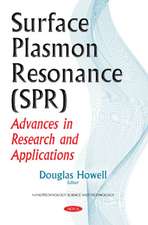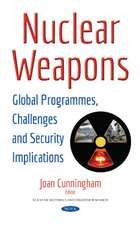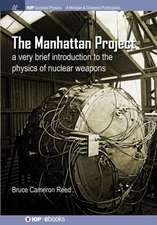A Monte Carlo Primer: Volume 2
Autor Stephen A. Dupree, Stanley K. Fraleyen Limba Engleză Paperback – 4 noi 2012
| Toate formatele și edițiile | Preț | Express |
|---|---|---|
| Paperback (3) | 629.11 lei 39-44 zile | |
| Springer Us – 4 noi 2012 | 629.11 lei 39-44 zile | |
| Springer Us – mai 2004 | 650.55 lei 6-8 săpt. | |
| Springer Us – 4 sep 2012 | 1222.17 lei 6-8 săpt. | |
| Hardback (1) | 1232.41 lei 6-8 săpt. | |
| Springer Us – 30 dec 2001 | 1232.41 lei 6-8 săpt. |
Preț: 629.11 lei
Preț vechi: 827.77 lei
-24% Nou
Puncte Express: 944
Preț estimativ în valută:
120.39€ • 126.59$ • 99.47£
120.39€ • 126.59$ • 99.47£
Carte tipărită la comandă
Livrare economică 14-19 aprilie
Preluare comenzi: 021 569.72.76
Specificații
ISBN-13: 9781461347682
ISBN-10: 1461347688
Pagini: 244
Dimensiuni: 155 x 235 x 13 mm
Greutate: 0.35 kg
Ediția:2004
Editura: Springer Us
Colecția Springer
Locul publicării:New York, NY, United States
ISBN-10: 1461347688
Pagini: 244
Dimensiuni: 155 x 235 x 13 mm
Greutate: 0.35 kg
Ediția:2004
Editura: Springer Us
Colecția Springer
Locul publicării:New York, NY, United States
Public țintă
ResearchDescriere
In
Volume
1,
A
Monte
Carlo
Primer
-
A
Practical
Approach
to
Radiation
Transport
(the
"Primer"),
we
attempt
to
provide
a
simple,
convenient,
and
step-by-step
approach
to
the
development,
basic
understanding,
and
use
of
Monte
Carlo
methods
in
radiation
transport.
Using
the
PC,
the
Primer
begins
by
developing
basic
Monte
Carlo
codes
to
solve
simple
transport
problems,
then
introduces
a
teaching
tool,
the
Probabilistic
Framework
Code
(PFC),
as
a
standard
platform
for
assembling,
testing,
and
executing
the
various
Monte
Carlo
techniques
that
are
presented.
This
second
volume
attempts
to
continue
this
approach
by
using
both
custom
Monte
Carlo
codes
and
PFC
to
apply
the
concepts
explained
in
the
Primer
to
obtain
solutions
to
the
exercises
given
at
the
end
of
each
chapter
in
the
Primer.
A
relatively
modest
number
of
exercises
is
included
in
the
Primer.
Some
ambiguity
is
left
in
the
statement
of
many
of
the
exercises
because
the
intent
is
not
to
have
the
user
write
a
particular,
uniquely
correct
piece
of
coding
that
produces
a
specific
number
as
a
result,
but
rather
to
encourage
the
user
to
think
about
the
problems
and
develop
further
the
concepts
explained
in
the
text.
Because
in
most
cases
there
is
more
than
one
way
to
solve
a
Monte
Carlo
transport
problem,
we
believe
that
working
with
the
concepts
illustrated
by
the
exercises
is
more
important
than
obtaining
anyone
particular
solution.
Cuprins
1.
Introduction.-
1.1
Exercise.-
1.2
Exercise.-
1.3
Exercise.-
1.4
Exercise.-
2.
Monte
Carlo
Sampling
Techniques.-
2.1
Exercise.-
2.2
Exercise.-
2.3
Exercise.-
2.4
Exercise.-
3.
Monte
Carlo
Modeling
of
Neutron
Transport.-
3.1
Exercise.-
3.2
Exercise.-
3.3
Exercise.-
3.4
Exercise.-
4.
Energy-Dependent
Neutron
Transport.-
4.1
Exercise.-
4.2
Exercise.-
4.3
Exercise.-
5.
A
Probabilistic
Framework
Code.-
5.1
Exercise.-
5.2
Exercise.-
5.3
Exercise.-
5.4
Exercise.-
6.
Variance
Reduction
Techniques.-
6.1
Exercise.-
6.2
Exercise.-
6.3
Exercise.-
7.
Monte
Carlo
Detectors.-
7.1
Exercise.-
7.2
Exercise.-
7.3
Exercise.-
8.
Nuclear
Criticality
Calculations
with
Monte
Carlo.-
8.1
Exercise.-
8.2
Exercise.-
8.3
Exercise.-
9.
Advanced
Applications
of
Monte
Carlo.-
9.1
Exercise.-
9.2
Exercise.-
9.3
Exercise.


